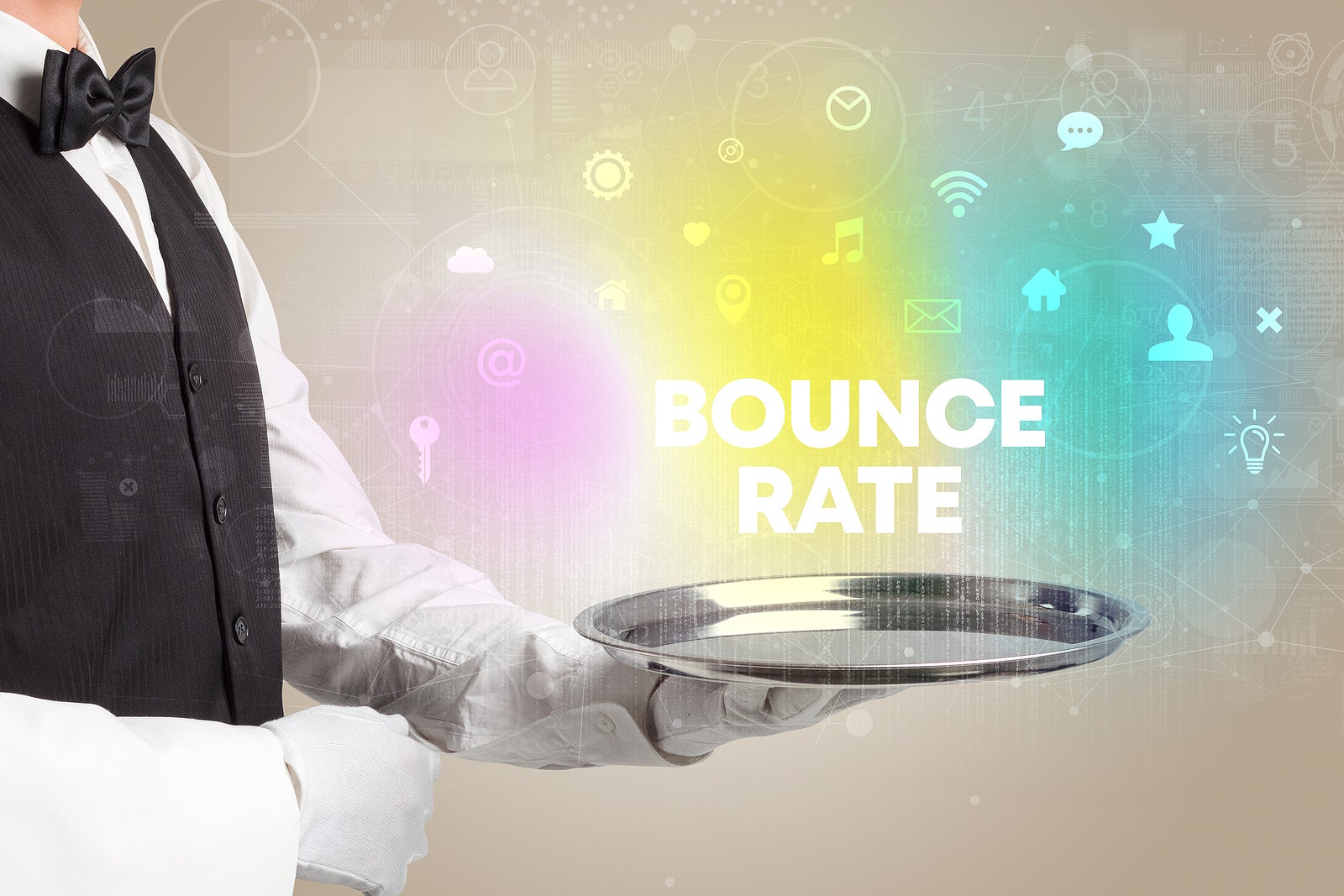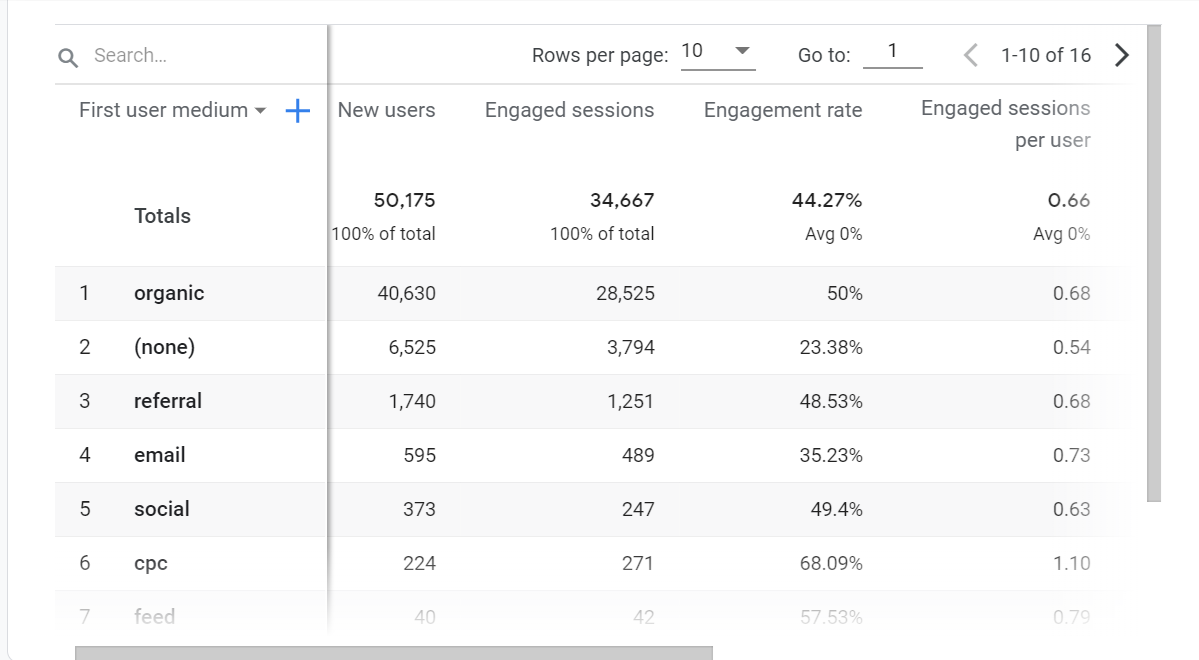
What is Bounce Rate?
How is bounce rate defined? The answer: It depends on the site and the tracking implementation. This is one of the reasons that Seer never advised solely measuring the success of a site based on metrics such as bounce rate and time on site.
Bounce rate in particular may be the most subjective metric available in Universal Analytics. There are several factors that impact bounce rate such as event structure and session timeout.
The Impact of Event Structure on Bounce Rate
A bounce happens when a user enters the site and no other hits are recorded in the session. This means that the likelihood of user bouncing is very dependent on the event structure used by the site.
Let’s look at the following two examples to see how what is considered to be a bounce varies from site to site.
User A Does Not Bounce:
A user who comes to the site quickly scrolls down the page, doesn’t find what they are looking for, and exits the site on the same page they entered. This company had enabled scroll tracking and was sending an interaction hit to GA every time a user scrolled to the bottom of the page. Since the scroll event was set up as an interaction hit this is not considered a bounce by GA.
User B Does Bounce:
A user comes to the site and carefully reads the page in its entirety, watches a video on the same page, and then exits the site without navigating to another page. This company had scroll tracking enabled and was sending the event as a non-interaction hit to GA (our recommended method) and did not have video tracking enabled. This event would be considered a bounce by GA.
These two examples make it very easy to see how bounce rates can be extremely misleading.
For users who aren’t as familiar with the intricacies of their Google Analytics setup, they may have a hard time accurately interpreting what this metric is saying.
The Impact of Session Timeout on Bounce Rate
Sessions that have only one pageview, and do not contain an event, will be considered bounces if the session timeout.
For instance, if a user is reading and consuming content on the page without taking any additional action for longer than the session timeout setting this will be considered a bounce. The default session timeout setting is 30 minutes but can be customized to meet the needs of each organization.
Bounce Rate No Longer Exists in GA4
Google Analytics 4 is more event and action-oriented than Universal Analytics. With this new way of tracking, it doesn’t make as much sense to have a metric describing inactivity on the site. Which is why Google Analytics 4 replaces bounce rate with the new ‘engagement rate’ metric.
An ‘engaged session’ is one that meets one of the following requirements:
- Lasts longer than 10 seconds
- Contains more than one pageview
- Contains at least one conversion event
Engagement rate is calculated in the following way: engaged sessions / total sessions.
You will be able to find engagement rates in many of the different reports in GA4, such as the acquisition report found below:
The Benefits of Engagement Rate
While there will always be inconsistencies in how conversion events are used on different sites, the 10-second threshold makes engagement rate much less subjective. This completely removes the impact of the session time-out setting.
Engagement rate will truly only decrease if users are coming to the site and quickly leaving. Though this metric is the inverse of bounce rate, it is more closely aligned with what users are expecting the metric to measure.
How to Prep Your Organization
If your organization places an emphasis on bounce rate, now is the time to start having conversations with your leadership team about other metrics that are available to measure your site’s success.
GA4 will be the primary platform for most organizations within the next year to a year and a half. Explain why bounce rate was a subjective measure and discuss other metrics that can be used in place of bounce rate.
One of the best things that you can do is to set up a parallel GA4 property so you can start gathering baseline data for newer metrics like engagement rate. You can compare the difference between engagement rate and bounce rate as they run simultaneously. This will make the transition easier and will give people time to adjust to a new metric.
Author: Jessica Propst is a writer at SEER Interactive. She previously worked at a full-scale digital marketing agency, where she gained analytics and marketing strategy experience. About a year and a half after obtaining her Marketing degree from Lindenwood University, she graduated with an MBA degree. Her passion is helping companies identify and track the KPIs that are most critical in accurately measuring the business’s success.













